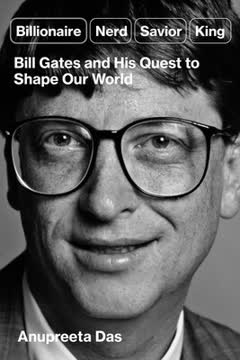Key Takeaways
1. Bill Gates: A Shifting Public Persona
Once a model of rectitude, Gates had fallen into a slurry of ignominy.
From icon to ignominy. Bill Gates, cofounder of Microsoft, has undergone a dramatic public image transformation over decades. Initially celebrated as a visionary "boy genius" who kickstarted the computing revolution, he later became a "corporate villain" and "robber baron" due to Microsoft's monopolistic practices and his perceived arrogance during the 1998 antitrust trial. This period marked a significant shift from public adoration to widespread criticism.
The philanthropic pivot. In the early 2000s, Gates began a deliberate transition from his technology career to full-time philanthropy, shedding his monopolist image to become a "tireless savior of the poor." This pivot, partly hastened by the negative publicity from the antitrust trial, saw him transform into a global benefactor, lauded for his ambition to save lives and address global health challenges through the Gates Foundation. His public appearances became more polished, focusing on his role as a problem-solver and thought leader.
Recent tarnishing. However, Gates's carefully cultivated image faced new challenges starting in 2019. Revelations of his association with convicted sex offender Jeffrey Epstein, followed by his 2021 divorce from Melinda French Gates and subsequent reports of extramarital affairs, corroded his public standing. This period saw him shift yet again, becoming a "darker, blurrier, and more divisive" figure, an unexpected focal point for debates about billionaire influence and societal inequality.
2. The Allure and Illusion of Billionaire Worship
We are united by a cultural voyeurism of billionaires, wondering what it would be like to live in their mansions with their armies of attendants; laze on their superyachts that float on international waters beyond the reach of nation-states; buy an entire company or an island on a whim; have a net worth larger than the GDP of some countries.
Fascination with wealth. Society is deeply entranced by billionaires, viewing them as "rock stars of capitalism" and celebrities. This fascination stems from a desire to understand their paths to success and emulate them, fueled by the capitalist ideal that material success is a direct outcome of individual merit and boundless opportunity. Books, articles, and popular culture constantly distill their lives into principles for getting rich, reinforcing the idea that those at the top hold all the secrets.
The American Dream narrative. Billionaires often frame their success as the embodiment of the American Dream, a rags-to-riches narrative where hard work, determination, and risk-taking lead to unimaginable fortune. This curated storytelling, exemplified by figures like Jeff Bezos and Mark Zuckerberg, emphasizes individual achievement while often omitting the complex, collective, and privileged details that contribute to their ascent. This narrative reinforces the belief that extreme wealth is deserved and attainable for anyone.
Growing public unease. Despite the admiration, there's a growing discomfort with the sheer scale of billionaire wealth and its influence. Polls indicate increasing public skepticism, particularly among younger generations, about whether such extreme wealth is beneficial for society. This unease is exacerbated by the perception that billionaires can bend conventions, act on whims, and exert disproportionate influence in politics, media, and civic life, leading to questions about fairness and accountability in an increasingly unequal world.
3. The "Nerd" Archetype: From Garage to Global Power
There is perhaps no nerd more representative of the early coalescence of technology, popular culture, and capitalism than Gates, the one with the greasy glasses.
The rise of the nerd. Bill Gates was an early template for the "boy genius" who drops out of college to build a world-changing tech company. His personal quirks, social awkwardness, and intellectual brilliance helped legitimize the "nerd" archetype in public imagination, creating space for a version of masculinity where mind triumphed over muscle. This persona, often depicted with unruly hair and oversized glasses, became a stock character in American popular culture, inspiring wonder, parody, and emulation.
From counterculture to capitalism. Early computer "hackers" and "computer bums" of the 1960s and 70s, who believed software should be free, were eventually tamed by the ambitions of capitalism. Gates, with his fundamental belief in proprietary software and intellectual property, saw a commercial market where none existed, building Microsoft into a dominant force. This shift transformed the hacker from a frontier outlaw to a mainstream capitalist darling, with Gates's persona becoming central to Microsoft's success and unavoidable presence.
Stereotypes and their impact. Hollywood and popular culture further cemented the "nerd" stereotype: a socially inept, brilliant, often white male, preoccupied with technology and science fiction, who uses his intellect to outwit others. While this portrayal brought attention to the tech world, it also contributed to a hypermasculine environment that deterred women and minorities from STEM fields. The evolution of the "nerd" to the "bro" (e.g., "Swole Bezos," Zuckerberg's jujitsu) reflects a new confidence and perceived impunity among tech billionaires, who now wield immense financial and societal power.
4. Philanthropy as Strategic Image Crafting
The Microsoft cofounder’s very public image switch from an all-knowing, imperious boss of a technology giant to an earnest student of the world and a thoughtful practitioner of philanthropy is largely a manufactured one, according to several people with insight into those efforts.
A calculated pivot. Gates's transition to philanthropy was a meticulously planned campaign to refurbish his public image, which had been severely tarnished by the Microsoft antitrust trial. His media team, led by political strategist Mark Penn, shifted focus from his business ruthlessness to his positive attributes: family, innovation, and charitable giving. This involved extensive media training, carefully orchestrated public appearances, and a deliberate effort to present him as a "lovable nerd philanthropist."
Nobel ambitions and strategic messaging. The ambition for a Nobel Peace Prize for Gates and the Gates Foundation was an "informal goal" among some employees, driving strategic publicity campaigns around global health milestones like polio eradication. This unofficial campaign, coupled with Gates's willingness to engage with the media in a new, more relatable way, aimed to elevate his stature to that of an "inspirational global leader." His blog, GatesNotes, and social media presence became direct channels to communicate his earnest, curious, and relatable persona.
The "humanizing" effort. Gates Ventures, the billionaire's private office, employs a dedicated team to constantly shape and polish his public aura. This includes promoting his prodigious reading habits, his "prophet and seer" image in technology and science, and even producing "silly videos" to "humanize the guy." This relentless image-making, while successful in transforming public perception, highlights the manufactured nature of his persona, a stark contrast to his earlier, less controlled public appearances.
5. The Gates Foundation: A Colossus of Global Influence
What was far more surprising, amid all the chaos and fear, was the presence of a single, high-profile actor: the Gates Foundation.
A global health powerhouse. The Gates Foundation has become an unparalleled force in global health and development, often dwarfing the budgets of multilateral organizations like the WHO. Its animating principle, "all lives have equal value," drives its mission to fight poverty, disease, and inequity. The foundation's strategic deployment of billions, particularly in vaccines and public health, has allowed it to build a tightly controlled network of alliances with governments, corporations, and research institutions worldwide.
The "vaccine czar" role. During the COVID-19 pandemic, the foundation's influence became strikingly evident. It committed over $2 billion to response efforts, directing funds for testing, research, and vaccine development, and extending loans to accelerate production in low-income countries. Gates himself became a prominent advocate for vaccines, leveraging his star power and understanding of science to weigh in on policy and counter misinformation, effectively acting as a "vaccine czar" alongside official health agencies.
Data-driven philanthropy. Gates's approach to philanthropy is deeply rooted in a "fix-it" mentality, driven by metrics, datasets, and evidence. He identifies "unmet demand" in neglected regions, viewing social good as a "profit motive" where returns are measured in lives saved. This "catalytic philanthropy" focuses on quantifiable impact, attracting technocratic experts and shaping global health priorities. The foundation's vast resources and structured approach allow it to direct outcomes in line with its preferences, often acting as an influential go-between among various parties.
6. Critiques of "Big Philanthropy": Power Without Accountability
Is it fair that the very billionaires who created or exacerbated some of the world’s problems, or benefited from a lopsided system, be given the keys to act as agents of change with little or no oversight?
Unchecked power and influence. The Gates Foundation's immense financial heft and the star power of its co-chairs allow it to exert a level of influence that critics argue is disproportionate and antidemocratic. With billions in annual spending, it can skew the priorities of nonprofits, multilateral agencies, and even governments, directing outcomes without public accountability. This raises fundamental questions about the legitimacy of private power in shaping global agendas.
Technocratic and top-down approach. Critics contend that the foundation's market-based, technocratic, and data-driven approach often ignores local and cultural realities, entrenching existing power dynamics between rich donors and poor recipients. Accusations of "neocolonialism" arise from its perceived imposition of Western solutions, such as its agricultural programs in Africa, without sufficient input from local communities. The foundation's rigorous reporting demands also burden smaller nonprofits, which may lack the sophisticated systems to comply.
Systemic issues unaddressed. A core criticism is that "big philanthropy" like the Gates Foundation seeks to solve individual, intractable issues via technology and data, rather than fighting for fundamental social and economic justice or systemic change. While acknowledging the good done, critics argue that it addresses problems created by extreme wealth generation without challenging the underlying system that caused them. This perpetuates a system where the wealthy act as agents of change with minimal oversight, effectively subsidizing their influence through tax deductions.
7. Melinda French Gates: Forging an Independent Feminist Identity
She had been seething about the unequal nature of her marriage to a man heralded globally as a technology genius and trailblazing philanthropist.
Struggle for equality. Melinda French Gates's journey has been marked by a long struggle to establish her own identity and influence, both within her marriage and at the Gates Foundation. Despite portraying themselves as equal partners, Bill Gates largely drove the foundation's direction and public voice. Melinda's "yearslong slog" to gain a foothold reflected her desire to be seen as Bill's equal, leading her to gradually assert herself and embrace a more visible public profile.
Feminist voice and advocacy. French Gates increasingly focused on women's rights and gender equality, initially as an inclusionary aspect of the foundation's work, then as a distinct area of focus. Her book, The Moment of Lift, served as a "coming-out party," cementing her identity as a feminist and empathetic advocate. She framed women's uplift as beneficial for all of society, drawing parallels between global power imbalances and her own experiences, including her decision to divorce.
Pivotal Ventures and independent philanthropy. Her divorce from Bill Gates in 2021 marked a definitive step towards independent philanthropy. Through Pivotal Ventures, an LLC she founded in 2015, French Gates aims to empower women through investing, philanthropy, and advocacy, focusing on overlooked issues like women in tech, political power, and caregiving. This structure allows her greater flexibility than a traditional foundation, enabling her to pursue her mission with substantial financial resources and a distinct public persona.
8. The Unseen Empire: Gates's Vast Investment Holdings
Cascade is a 30-year-old investment firm owned by Gates, with two goals: to oversee his vast fortune and carefully invest the money that sits in the endowment of the Gates Foundation.
The "Gateskeeper" of wealth. Bill Gates's immense personal fortune and the Gates Foundation's endowment are managed by Cascade Asset Management, a secretive investment firm led by Michael Larson. Larson's mandate has been to diversify Gates's wealth away from Microsoft stock into a vast portfolio of stocks, bonds, hotels, farmland, and private equity, all while keeping Gates's name out of the headlines. This "avoid all headlines" culture involved creating shell companies and strict non-disclosure agreements for employees.
A conservative, value-driven approach. Larson adopted a conservative investment strategy, prioritizing capital preservation and steady returns, akin to Warren Buffett's value investing principles. Cascade holds large positions in "unfashionable but sturdy companies" like railways and agricultural equipment makers. Its holdings include a 75% ownership of the luxury hotel brand Four Seasons and, as of 2021, Gates was the nation's largest private owner of farmland, a fact that surprised many.
Secrecy and its implications. The firm's extreme secrecy, including employees not using Gates's name on business cards and avoiding public disclosure of deals, aimed to prevent inflated prices for assets and maintain Gates's philanthropic image. However, this opacity has also shielded Larson from scrutiny regarding his management style, which some former employees described as imperious and prone to fits of rage, leading to complaints and settlement payments. The vastness and hidden nature of this investment empire underscore the immense, often invisible, financial power Gates wields.
9. Billionaire Behavior: Bending Rules and Fueling Resentment
Gates’s $2 million tunnel and Musk’s $44 billion purchase of Twitter are two examples of the ways in which billionaires often appear to be able to bend convention to fit their peculiar needs, feed their obsessions, act on their whims, and impose their preferences—in ways big and small, splashy and covert, dangerous and benign.
Conventions bent to whims. Billionaires frequently demonstrate an ability to operate beyond conventional norms, using their immense wealth to fulfill personal desires, impose preferences, and even reshape public infrastructure. Examples range from Gates reportedly paying to reroute a state highway and build a private tunnel for his vacation compound, to Elon Musk's impulsive $44 billion acquisition of Twitter, seemingly driven by a desire to control a social media platform. These actions highlight a perceived impunity and a sense that rules can be bypassed for the ultra-rich.
Luxury and environmental impact. The lavish lifestyles of billionaires, characterized by private jets, mega-yachts, and sprawling estates, are not merely symbols of profligacy but also contribute significantly to environmental concerns. The carbon footprint of the world's richest individuals, largely due to their luxury consumption, far exceeds that of average citizens. This stark contrast fuels public resentment, especially when figures like Gates, a leading voice on climate change, are seen as hypocritical due to their personal consumption habits.
Political and societal capture. Billionaires increasingly exert disproportionate influence in politics and civic life through massive campaign contributions, lobbying efforts, and funding of advocacy groups. This "capture" of American politics, where a small number of donors wield immense power, raises concerns about the integrity of democratic processes. Furthermore, their acquisition of media organizations and sports teams, and their single-handed revitalization of cities, make them seem indispensable, yet also highlight a growing dependence on private wealth for public goods.
10. Debunking the "Self-Made" Myth: Privilege and Systemic Advantage
“A lot goes into the making of a success story, from the compounding of advantage over generations to socioeconomic privilege to stable homes [and] social safety nets,” Collins said.
Beyond individual merit. The pervasive "self-made" narrative, foundational to the American Dream, often oversimplifies the complex factors contributing to billionaire success. While talent and hard work are acknowledged, critics like Bill Gates Sr. and activist Chuck Collins argue that multi-generational advantages, socioeconomic privilege, and stable home environments play an indispensable role. Gates himself benefited from early access to computers at an elite private school and a supportive family network, factors often overlooked in his origin story.
The role of inherited advantage. Research indicates that a significant portion of "self-made" billionaires actually come from affluent or middle-class backgrounds, benefiting from connections, quality education, and financial security that minimize the cost of failure. This challenges the notion that success is solely a product of individual grit, suggesting that the circumstances of birth and upbringing provide a crucial head start. The ability to take big risks, for instance, is often subsidized by economic security.
Systemic factors and inequality. The rise of extreme wealth is also linked to broader systemic factors, including favorable tax policies, globalization, and the weakening of labor unions. These forces have shifted economic gains towards those with technical knowledge and analytical skills, often college-educated individuals from privileged backgrounds, while incomes for middle and lower classes stagnate. This growing wealth concentration, as highlighted by economists like Thomas Piketty, fuels public debate about whether the system itself is rigged, making the "self-made" myth increasingly contentious.
11. The Rise of Distrust: Billionaires as Targets of Conspiracy
Conspiracy theories are therefore comforting to people and can make them feel grounded.
The fertile ground of distrust. In an era of rapid change, political polarization, and declining trust in institutions, conspiracy theories offer seemingly coherent explanations for chaotic events. These narratives, often pitting "us" against "them" (elites, governments, powerful individuals), thrive by sowing distrust and filling informational voids. The COVID-19 pandemic, with its sudden onset and global disruption, provided a perfect breeding ground for such theories, and high-profile figures like Bill Gates became prime targets.
Gates as a conspiracy magnet. Gates's prominent role in global health and his advocacy for vaccines during the pandemic made him an easy target for misinformation. His 2015 TED talk, presciently warning of a global pandemic, was twisted into "evidence" that he engineered the virus for profit or population control. Other theories, such as his alleged push for microchips via vaccines, gained traction despite being baseless. His immense wealth and perceived influence, combined with his lack of medical expertise, made his advocacy seem suspicious to some, fueling widespread distrust.
The impact of misinformation. The proliferation of these theories, amplified by social media and certain news outlets, led to a significant portion of the public believing outlandish claims about Gates. This "greatest pushback ever" bewildered Gates, who found the accusations "stupid and strange." The phenomenon underscores how easily public figures, especially billionaires, can become lightning rods for societal anxieties and resentments, transforming their image from benevolent philanthropists to sinister puppet masters in the public imagination.
Last updated:
Review Summary
Billionaire, Nerd, Savior, King receives mixed reviews, with an average rating of 2.98 out of 5. Many readers criticize the book for not focusing enough on Bill Gates and instead offering a broader critique of billionaires and philanthropy. Some appreciate the critical perspective on Gates and billionaire philanthropy, while others find it biased and unfocused. Complaints include repetitive content, lack of new information, and misleading marketing. A few readers praise the book's insights into Gates' later life and philanthropy, but overall, opinions are divided.
Similar Books

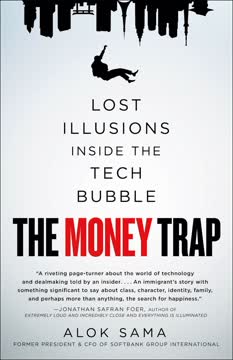

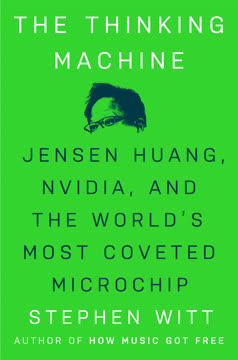
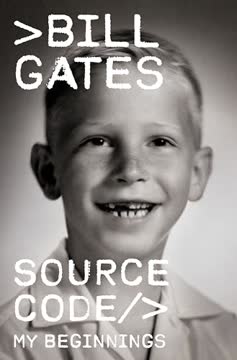
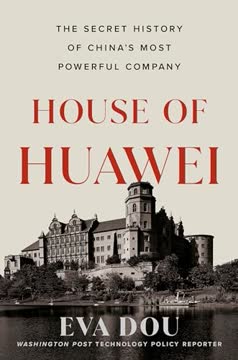

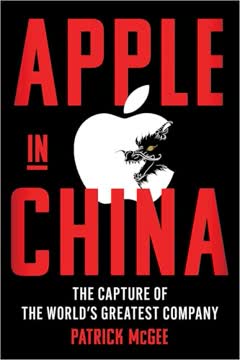
Download PDF
Download EPUB
.epub digital book format is ideal for reading ebooks on phones, tablets, and e-readers.
